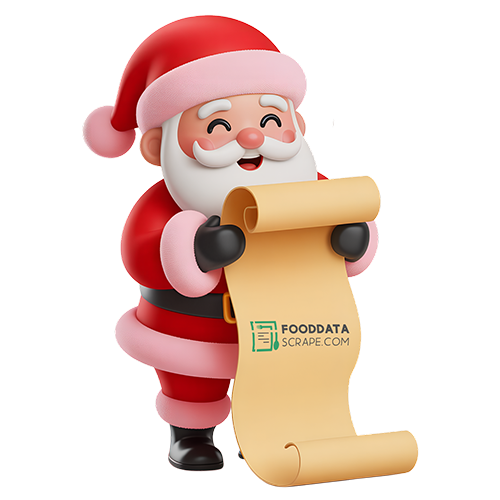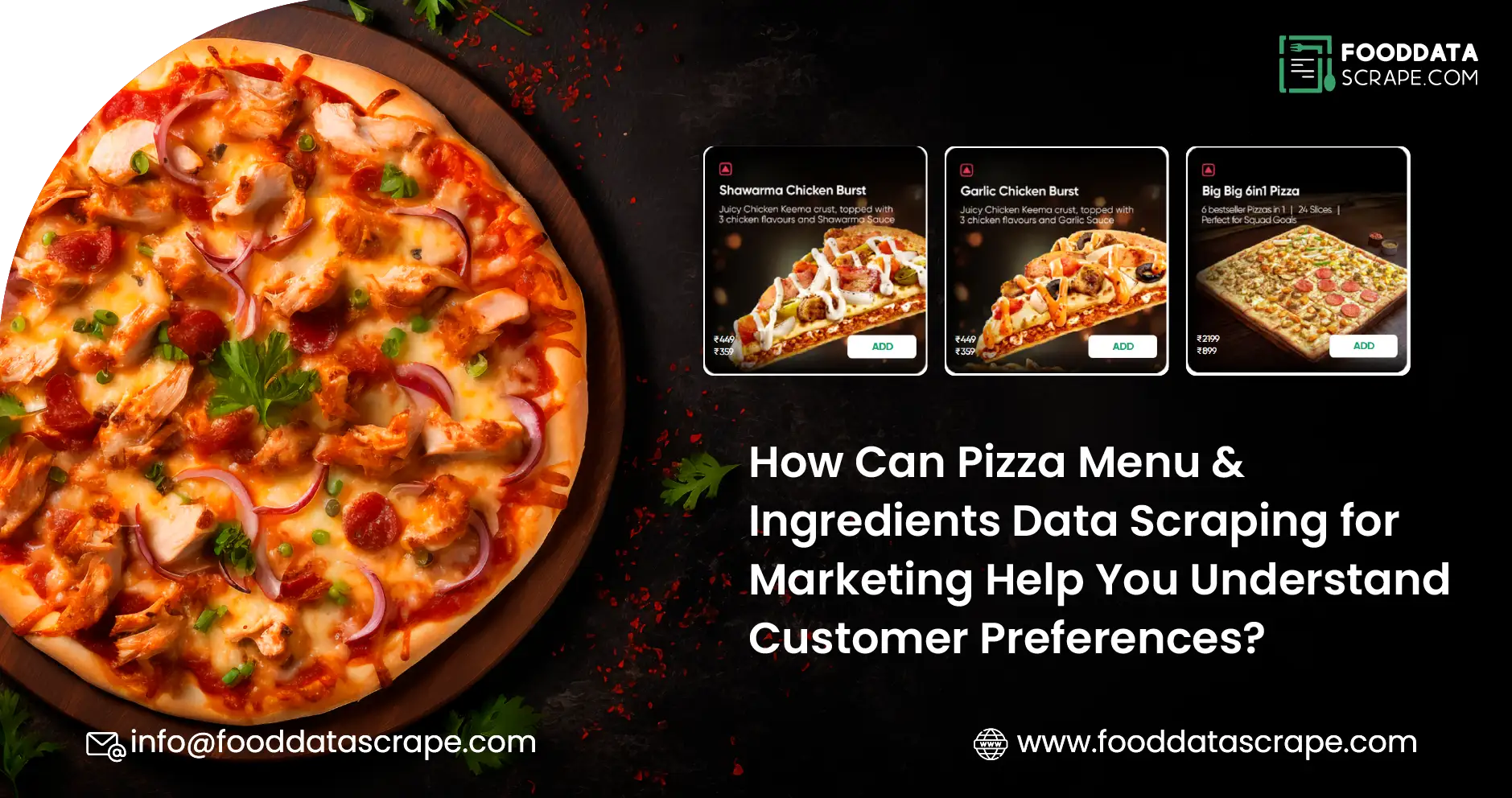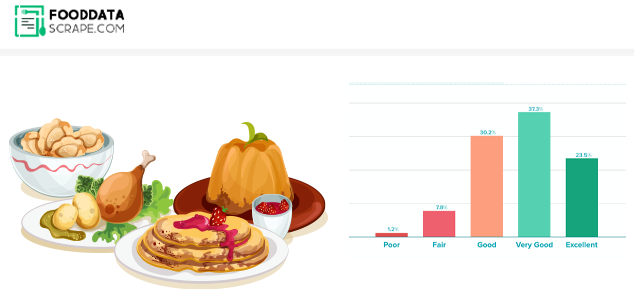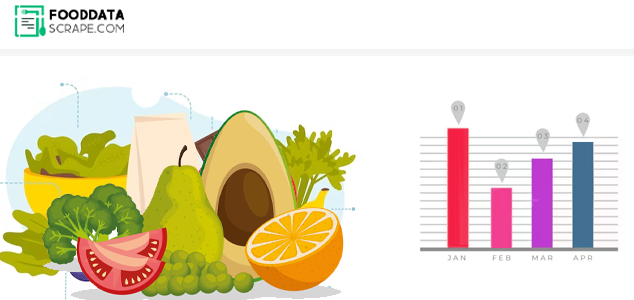Introduction
Pizza is more than just a food; it is a cultural phenomenon, a weekend habit, and a thriving segment of the global food and beverage sector. In a data-driven world, brands cannot rely solely on taste; they need to understand what pizza lovers want, where they are ordering from, and what combinations drive sales. Pizza Menu & Ingredients Data Scraping for Marketing will provide deep insights into customer preferences and the competitive landscape. Pizza Menu Data Scraping for Marketing Insights is also necessary to develop competitive practices, as it must be done regularly to produce ongoing data. They will utilize structured data and unstructured data from various restaurant platforms, including pizza restaurants and delivery apps, to provide marketers with actionable intelligence that can significantly influence product positioning, promotions, and pricing.
Whether you are a restaurant owner, food tech startup, market analyst, or digital marketer, learning how to Scrape Pizza Restaurant Prices and Deals will provide you with valuable insights into consumer patterns, competitor offerings, regional trends, and taste preferences within the Canadian pizza industry.
Benefits are not limited to analytics; they will help you innovate, connect with customers, and gain a competitive advantage in a heavily saturated market.
Why Scraping Pizza Menu and Ingredient Data Matters?
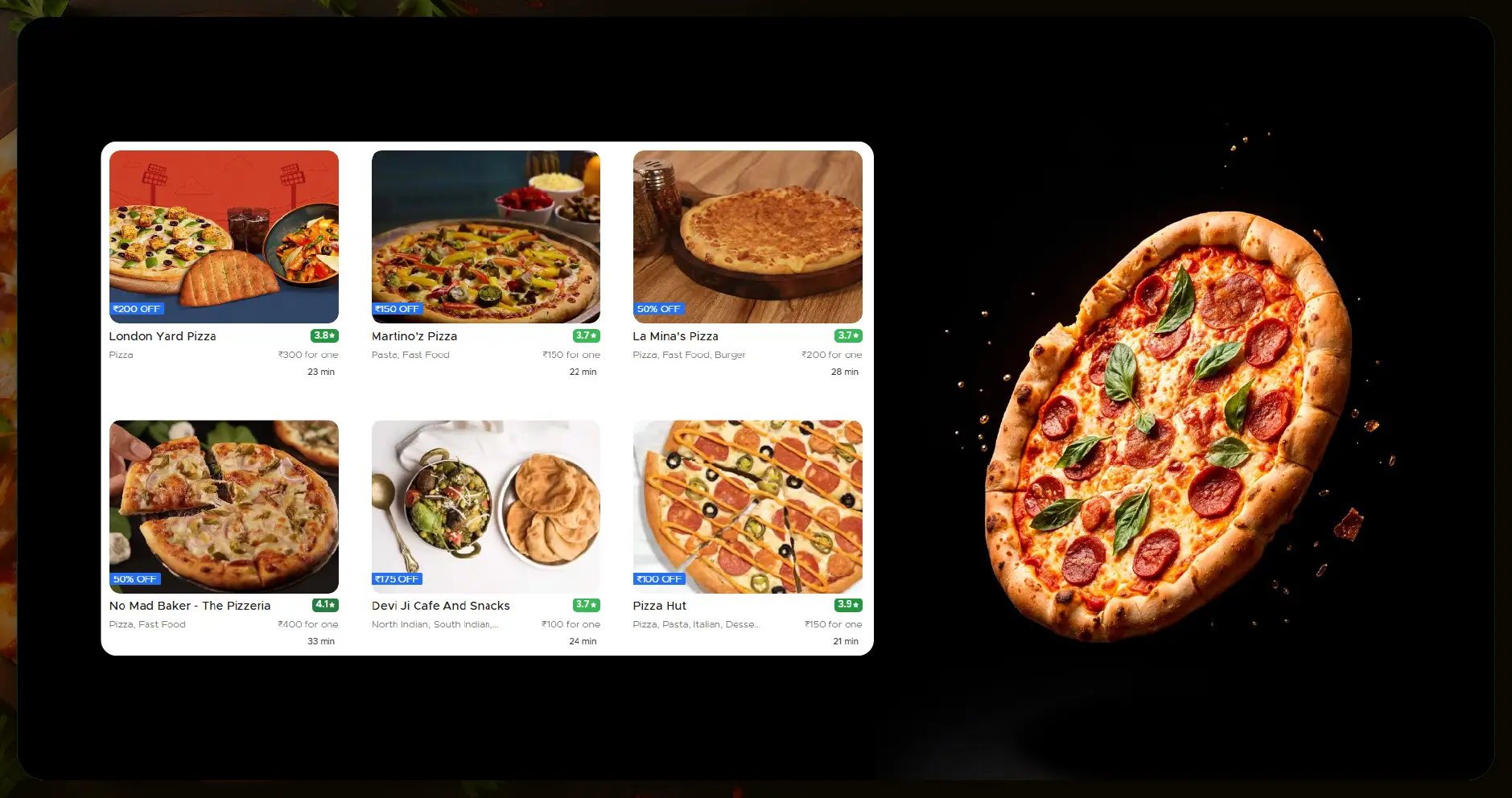
Scraping pizza menu and ingredient data provides deep insights into consumer preferences, pricing strategies, and emerging food trends. This data empowers restaurants, marketers, and delivery platforms to create targeted campaigns, optimize menus, and enhance customer experiences. Understanding what toppings sell best, which combos attract customers, and how regional tastes vary is essential for staying competitive in the pizza industry.
- Consumer-Centric Decision Making: The pizza industry is driven by personalization. From gluten-free crusts to vegan cheese, customers expect customized options. With the ability to Extract Pizza Ingredients and Recipe Data, businesses can identify the most requested toppings, trending crust styles, and dietary demands. This helps brands create inclusive menus that cater to modern eating habits and preferences.
- Trend Monitoring in Real-Time: Pizzas aren't static; they evolve with seasons, festivals, and viral trends. Using intelligent systems to Scrape Pizza Ordering Trends from Food Delivery Apps allows brands to monitor demand surges during major events or regional holidays. For instance, a spike in cheese-burst pizzas during national football tournaments can inform supply and marketing efforts.
- Unlocking the Power of Combo Analytics: Deals drive decisions. Many customers rely on bundle meals and offers while placing orders. With tools to Extract Pizza Combo Deals & Offers from Delivery Apps, marketers can dissect what pairings (like a large pepperoni pizza + garlic bread + cola) attract high conversion rates. This is critical for crafting competitive combo packages and limited-time discounts.
- Competitor Analysis Across Geographies: Pizzerias can gain insights by analyzing competitors across cities or countries. With systems in place to Scrape Top-Selling Pizza Varieties and Ingredient Trends, restaurants can learn which flavors are popular among specific demographics, helping them expand strategically and localize their menu offerings for new markets.
- Custom Dashboard Integrations: Visual insights facilitate the efficient interpretation of large-scale data. By integrating results from scraping into platforms that deliver Pizza Flavors & Ingredient Insights, businesses can view real-time charts of top ingredients, menu comparisons, price evolution, and consumer sentiment analysis.
Sources of Pizza Data
Pizza data is abundant across the digital food ecosystem. Here are the top sources:
- Food delivery apps (e.g., Uber Eats, DoorDash, Swiggy)
- Restaurant websites
- Online menu aggregators
- Franchise chain portals
- User review platforms like Yelp or Zomato
By leveraging Food Delivery Data Scraping Services, companies can build comprehensive pizza intelligence databases and draw more profound conclusions about customer preferences and pricing dynamics.
Key Data Points Collected from Pizza Menus
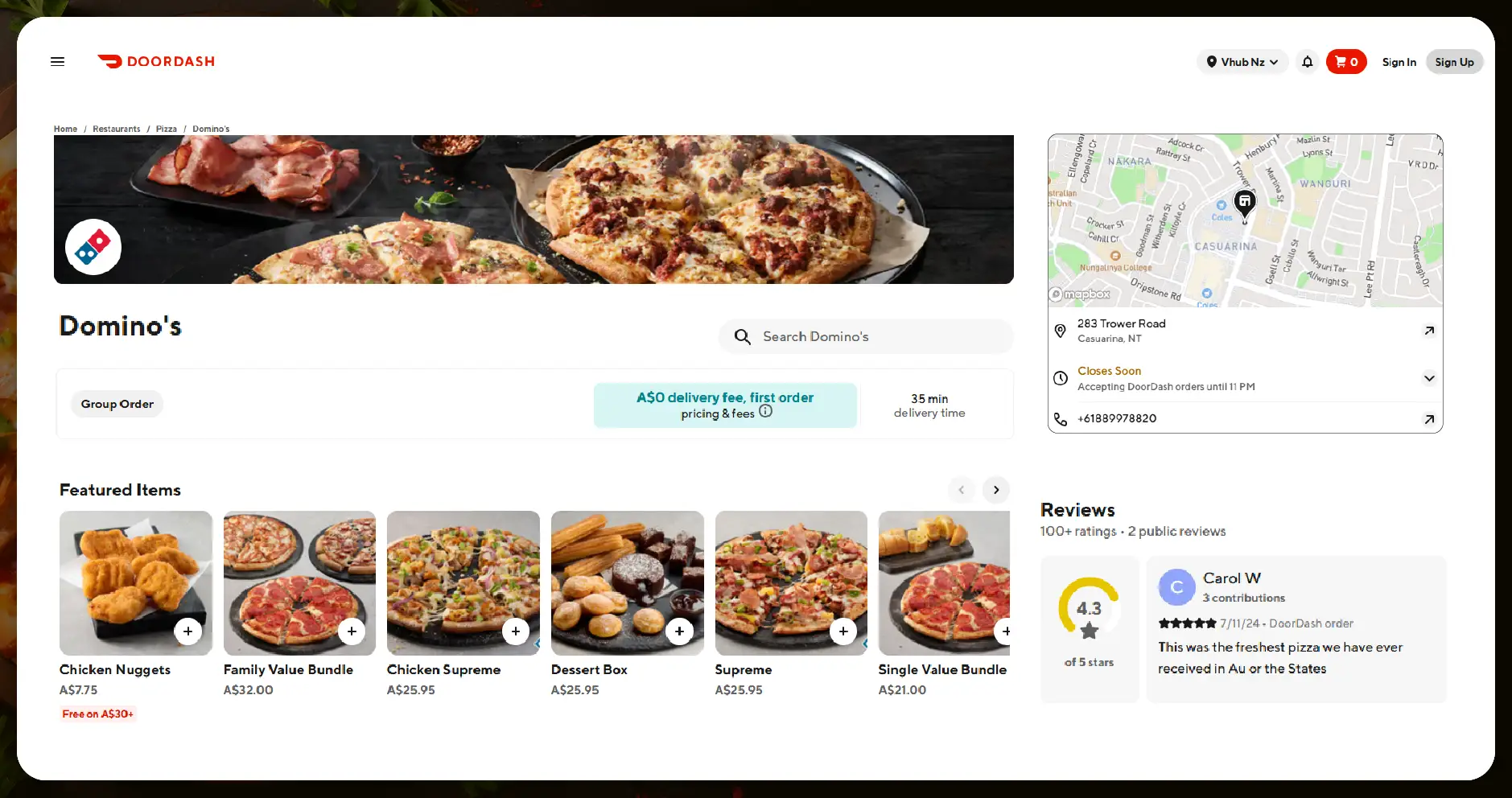
When performing Restaurant Menu Data Scraping, a wide range of structured fields is captured:
- Pizza Name
- Description
- Size Variants
- Prices
- Ingredient List
- Customization Options
- Availability by Time/Location
- Add-ons (extra cheese, toppings, dips)
- Nutritional Information
- Combo Packages
- Customer Ratings & Reviews
This data enables marketing teams to create more targeted campaigns and R&D teams to prioritize product development that aligns with customer preferences.
Unlock powerful pizza insights today—partner with us for accurate, scalable, and real-time pizza menu data scraping solutions!
Use Cases Across Industries
Scraping pizza menu and ingredient data serves multiple industries by providing actionable insights. Restaurants refine offerings, cloud kitchens test combos, and FMCG brands track ingredient demand. Market researchers analyze trends, while delivery platforms enhance personalization. From nutrition apps to food analytics firms, diverse sectors utilize this data to innovate, optimize pricing, and understand evolving consumer behavior in real-time.
- Restaurants and Cloud Kitchens: Real-time pricing comparisons and trend reports help restaurants innovate and update their menus regularly. They can optimize costs, test new combos, and localize flavors for different branches.
- FMCG & Ingredient Suppliers: Ingredient suppliers can use Food Delivery Scraping API Services to identify which cheese variants or sauces are trending in pizzas. This helps in targeting the right restaurant segments with popular products.
- Market Research Firms: Analysts can provide comprehensive industry reports using Restaurant Data Intelligence Services, which draw insights from thousands of pizza menus across various platforms and regions.
- Food Delivery Platforms: Delivery app providers can enhance personalization features and in-app recommendations by analyzing trends gathered from restaurant data scraping.
- Nutrition & Health Apps: Apps focused on calorie tracking or dietary habits can integrate pizza ingredient data for more accurate meal breakdowns.
Benefits of Pizza Data Scraping
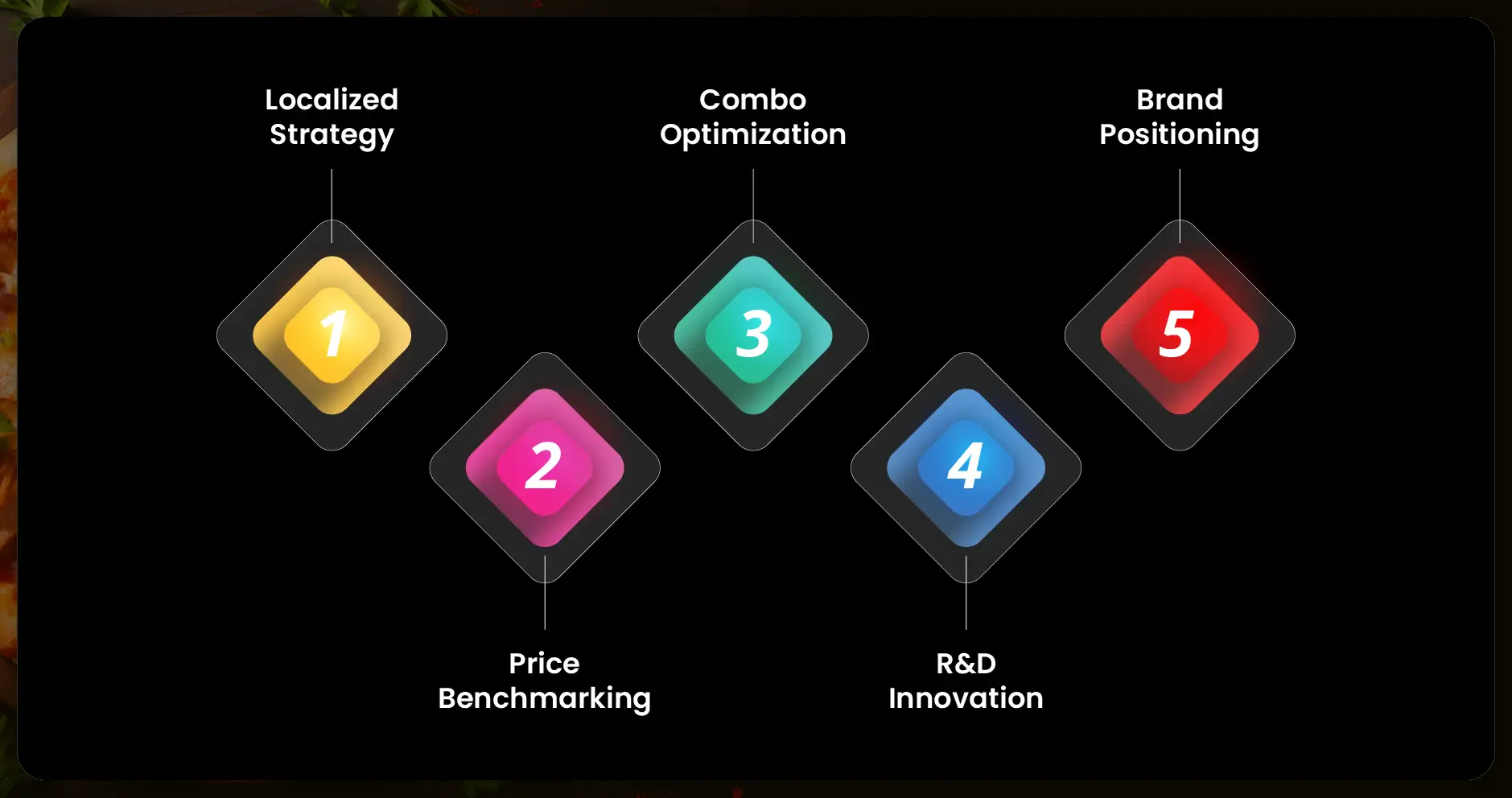
- Localized Strategy: Understand regional preferences to launch localized marketing campaigns.
- Price Benchmarking: Ensure your menu prices remain competitive across platforms.
- Combo Optimization: Identify which add-ons increase AOV (Average Order Value).
- R&D Innovation: Use trending data to design new flavors or seasonal products.
- Brand Positioning: Compare ingredients and presentation styles with top competitors to establish a distinct identity.
Tools and Technologies Used
- Custom web crawlers for HTML parsing
- APIs to fetch structured menu data
- NLP for ingredient classification and combo extraction
- Visualization tools for dashboard insights
- AI algorithms to detect emerging menu trends
These are often embedded within modern Food Delivery Intelligence Services, allowing businesses to transition from static reporting to intelligent, real-time decision-making platforms.
Ethical & Legal Considerations
It's essential to follow best practices when scraping data:
- Respect robots.txt and site terms
- Use rate-limiting and proxies to avoid server overload
- Prefer public and accessible data points
- If available, use partner APIs for compliance
This ensures sustainable and lawful data collection.
How Food Data Scrape Can Help You?
- Customized Pizza Menu Extraction: We build tailored scrapers to extract complete pizza menu data—names, prices, sizes, ingredients, and add-ons—from restaurant websites and food delivery platforms.
- Ingredient-Level Insights: Our tools help extract detailed ingredient and recipe data, enabling you to analyze popular toppings, crust preferences, and dietary trends.
- Combo & Deals Scraping: We capture and structure pizza combo offers, discounts, and bundled meal data to support pricing strategies, marketing efforts, and competitor benchmarking.
- Trend Monitoring & Analytics: Our dashboards offer real-time insights by scraping top-selling pizzas, customer reviews, and ordering trends across platforms and geographies.
- Scalable API Access: Through our robust scraping APIs, you can access structured, real-time pizza data for multiple locations, ideal for large-scale analytics and business intelligence.
Conclusion
Scraping pizza menu and ingredient data is not just about gathering information—it's about transforming raw menu content into business gold. From optimizing toppings and bundles to analyzing customer behavior and forecasting demand, scraped data empowers pizzerias and food brands to evolve strategically in a rapidly changing industry.
By collaborating with expert teams and utilizing the right tools, businesses can transform data into compelling stories that inform marketing, menu engineering, and customer experience. Modern pizzerias and aggregators should not underestimate the power of intelligent scraping.In conclusion, as more food brands adopt analytics, solutions like Food Delivery Intelligence Services will enable them to make informed decisions more quickly.
A well-designed Food Price Dashboard enables businesses to visualize pricing dynamics and trends. With curated Food Delivery Datasets, teams can analyze large volumes of structured menu data with precision and accuracy.
If you are seeking for a reliable data scraping services, Food Data Scrape is at your service. We hold prominence in Food Data Aggregator and Mobile Restaurant App Scraping with impeccable data analysis for strategic decision-making.

